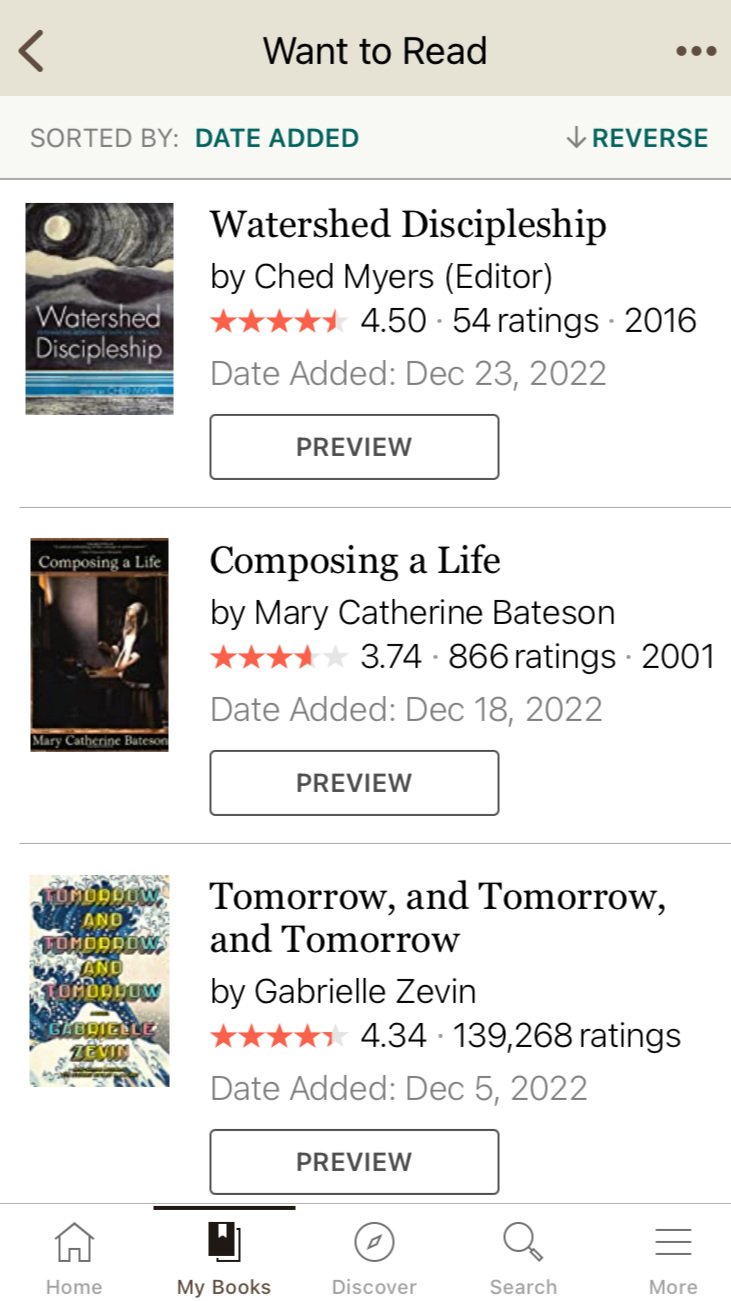How I Organize My Reading
I could live a thousand years and still be reading. It’s a sad fact of being mortal: there simply isn’t enough time. Meanwhile, I add books to my to-be-read list much faster than I can actually read them. And so it goes, year after year.
Nevertheless, I keep track. One trick for reading more is to always have your next book ready. And you never know when a particular mood or research need will strike. So, I diligently record interesting titles as I discover them—which could be while reading another book, in conversation with a friend, at an event, or mid-scroll.
Here’s how I keep them organized. 👇🏼
(1) I throw them into Goodreads.
The quickest way I’ve found to track books, whether finished or aspirational, is on Goodreads. I use the basic shelves (read, want to read, abandoned), but it’s possible to add genre tags and customize. You can follow me and peruse my lists here.
Goodreads is a gem, as far as social media goes. It’s a user-friendly engine for searching, flagging, and tracking books. Every user is a reader, the pace activity is slow, and trolling is rare. Also, it’s fascinating to see what other people are reading, and it’s fun to discover bookish kindred spirits.
The downside is that Goodreads is owned by Amazon, and you might want to resist the empire. It’s a struggle. Some big bookers use spreadsheets, blogs, or other project management tools instead.
The main thing at this stage is to to have a place where you can capture links and titles efficiently, without interrupting the flow of whatever else you’re doing.
(2) Every few months, I copy those titles into my book journal.
This is where I dig in to organize my list by categories. Goodreads offers some of this functionality, and they updated shelving features recently, but so far I prefer the flexibility of analog.
My system is simple: I track the books I read each year, along with the titles on my want-to-read list. There’s a table of contents on page 1, and each page is dedicated to a category like fiction, science, or spirituality. When I fill a sheet, I add a second page for that category on the next available sheet.
In addition, I use basic symbols to mark which books I own, which books I finish, and any re-categorizations along the way. Because I want to be intentional about reading more diverse voices, I also note which titles were authored by BIPOC, global, and LGBTQ+ writers.
Long story short, my book journal helps me understand my reading preferences, remember older titles, and be more intentional about what and whom I’m reading over time. Yes, I know this step is inefficient, and I don’t mind. I enjoy the slow process and the chance to reflect.
(3) I list books I’m currently reading in my monthly planner.
I’m not a one-book-at-a-time kind of girl, and sometimes my stack gets unwieldy. So, I keep a list of current titles in my monthly planner. I lean on this when I sit down to read, to decide which book to pick up. It also helps keep me in check when I want to start yet another new title. This way, I don’t get too scattered. Also, I generally use journals for a mix of forward planning and retrospective. It’s fun to glance back across the months to see how my reading flowed and remember the literary worlds I visited.
Finally, I use Trello to organize reading and notes for specific projects.
The materials I organize in Trello aren’t all books, and the books aren’t always on my other lists. However, I typically add them to my currently reading and finished lists.
I also use Zotero for tracking research, but only when a project requires formal citations. (It has Word integration and can export formatted footnotes and endnotes.) That kind of writing is less frequent for me at present, so it’s overkill for what I need. Also, I prefer the user experience and visual aspect of Trello.
That’s it for now! How do you organize your reading? I’d love to hear.



